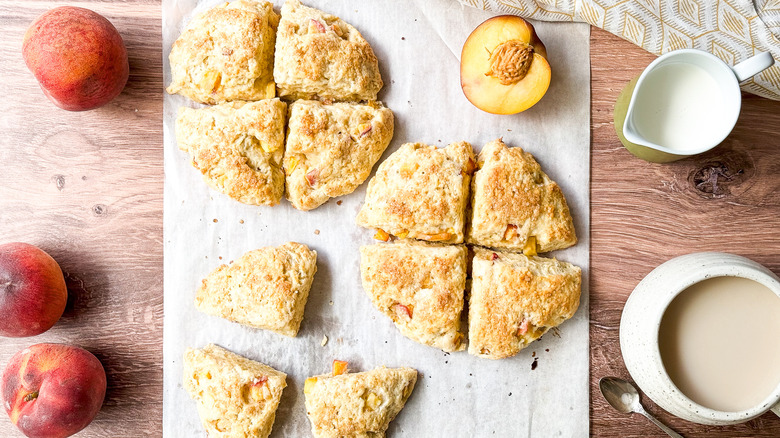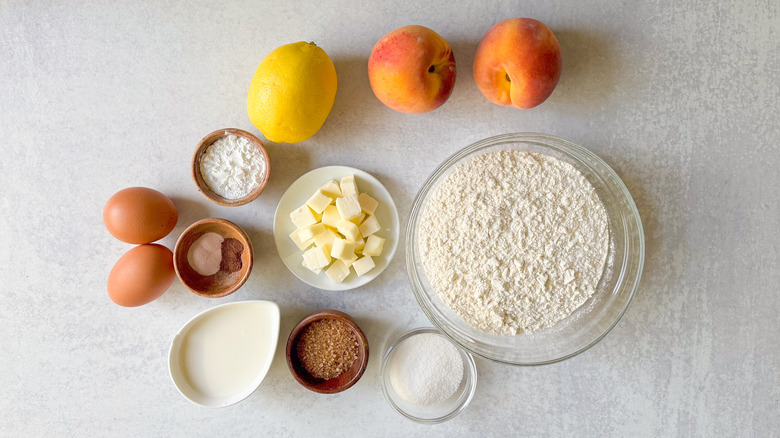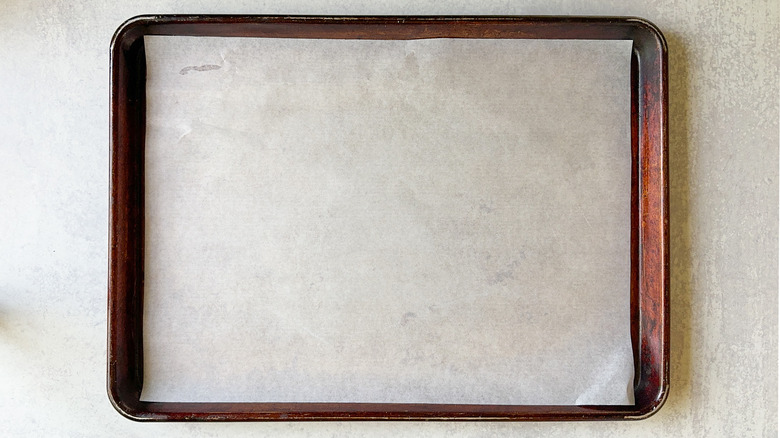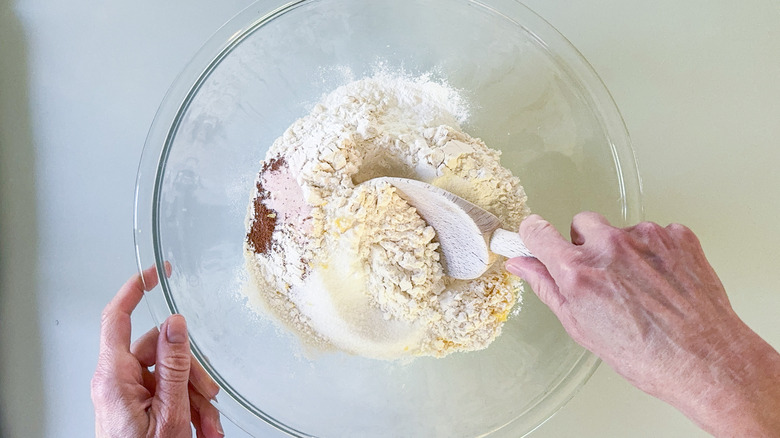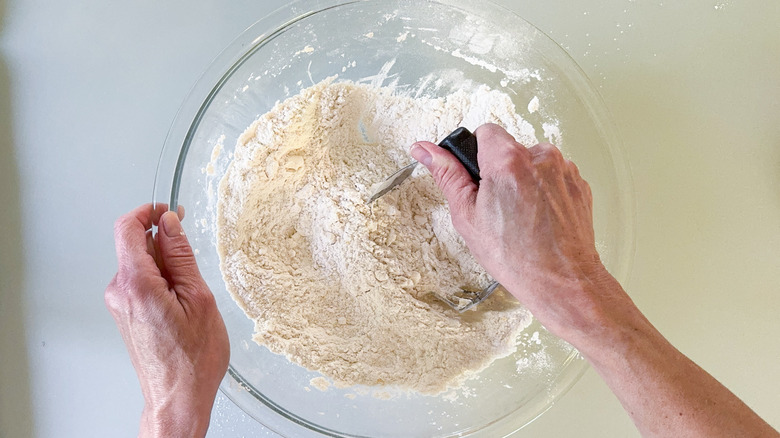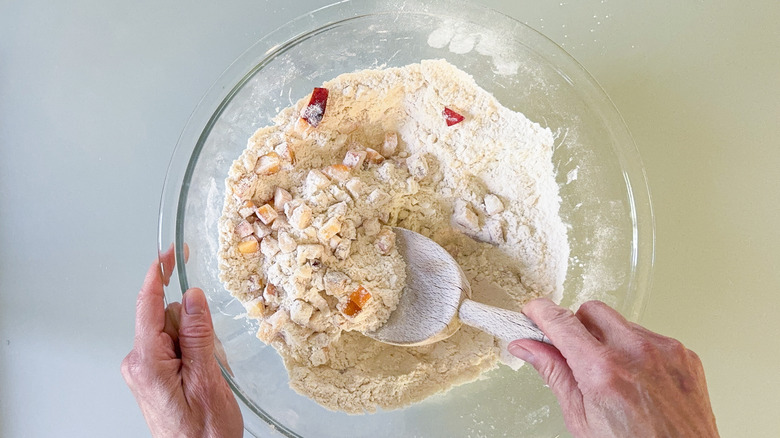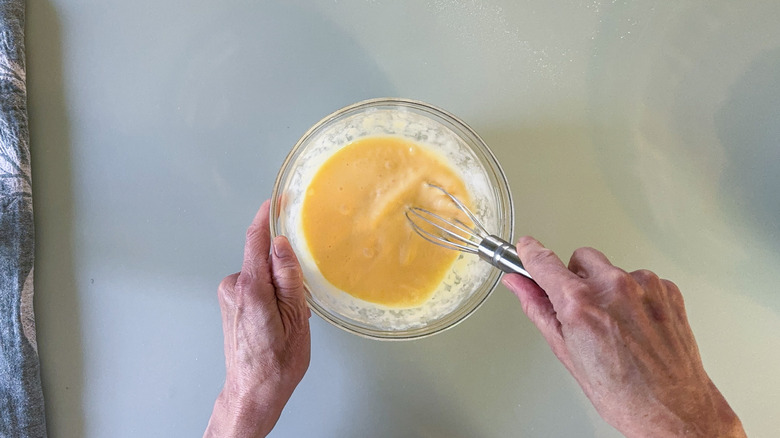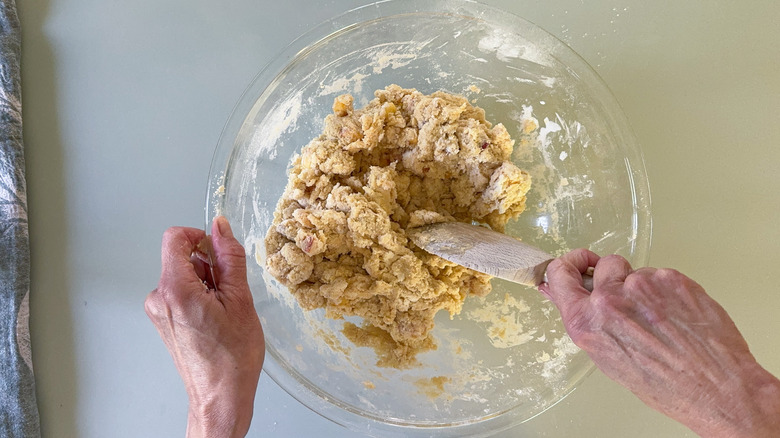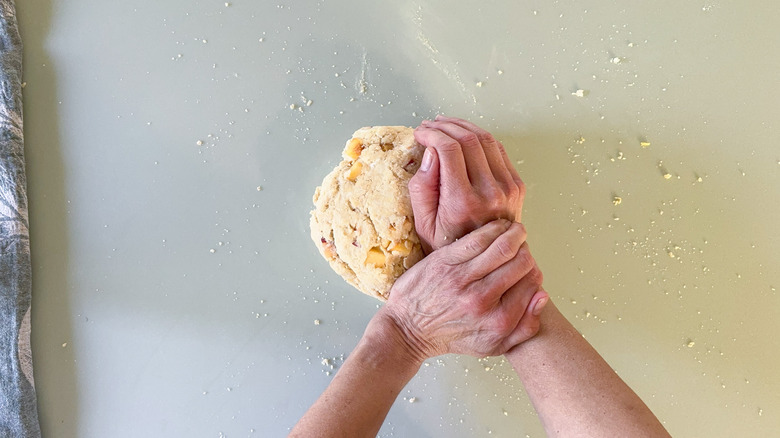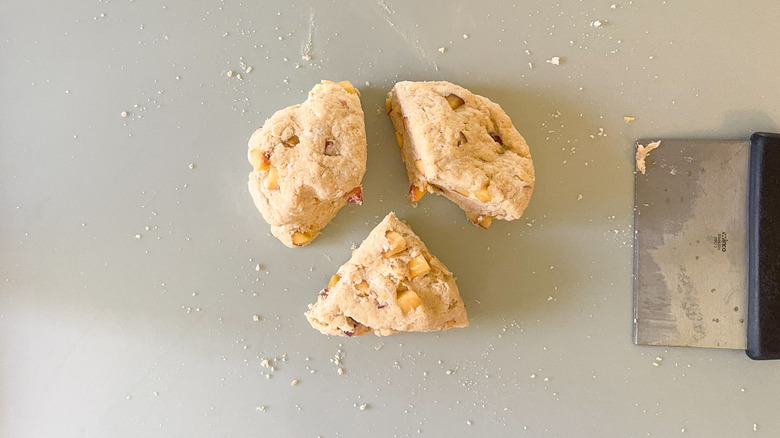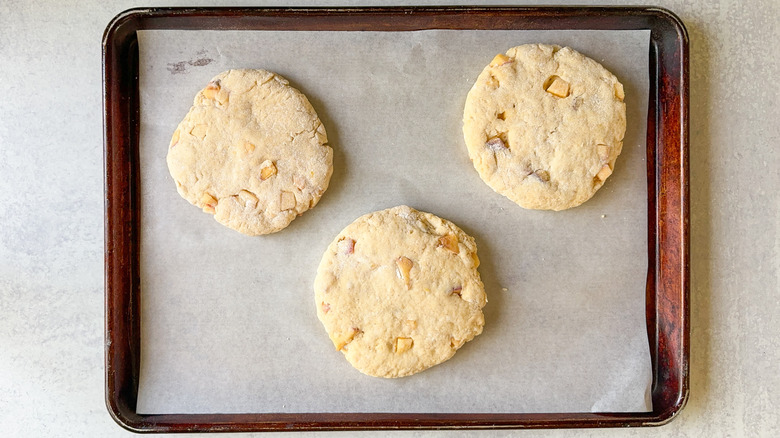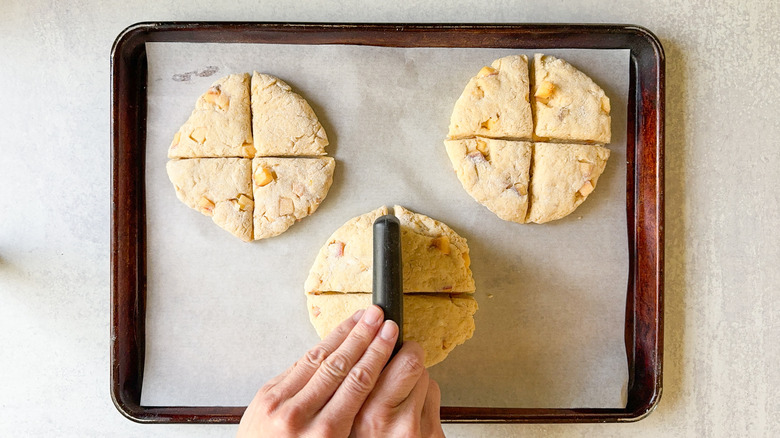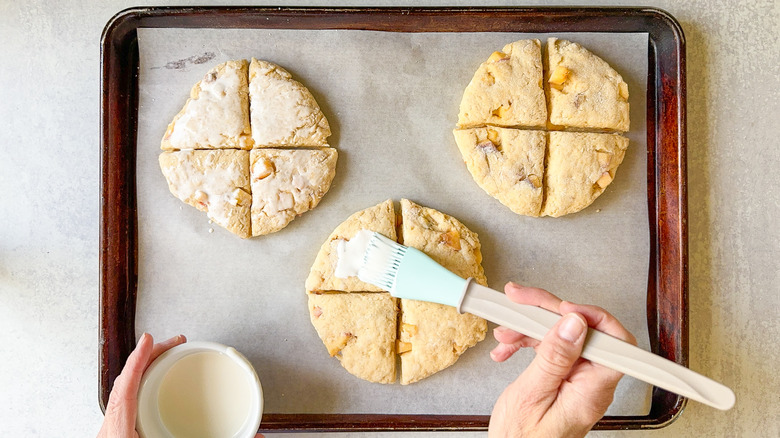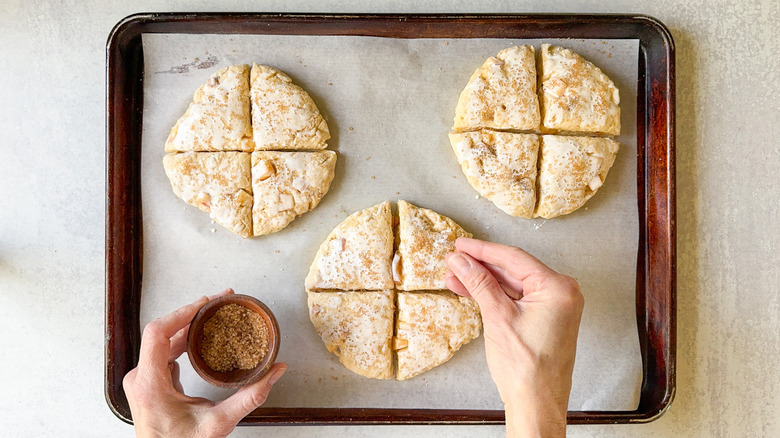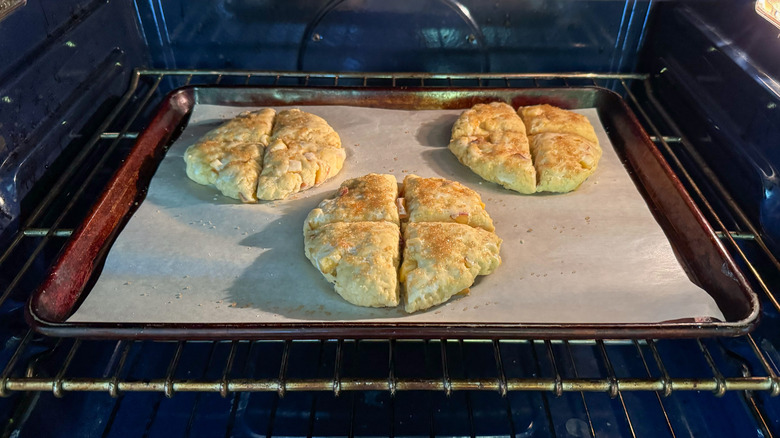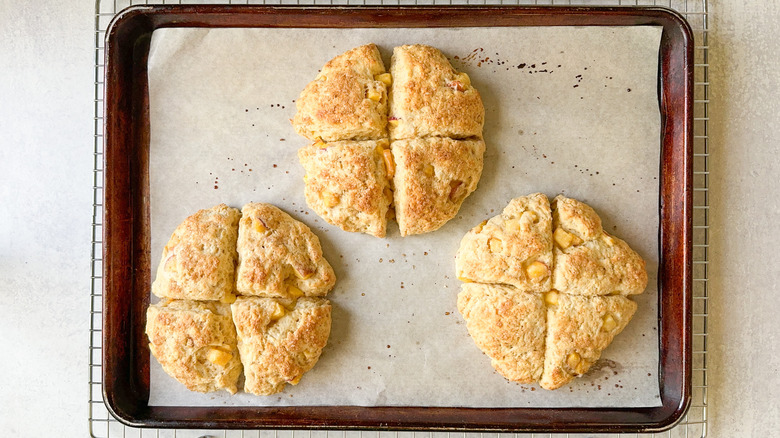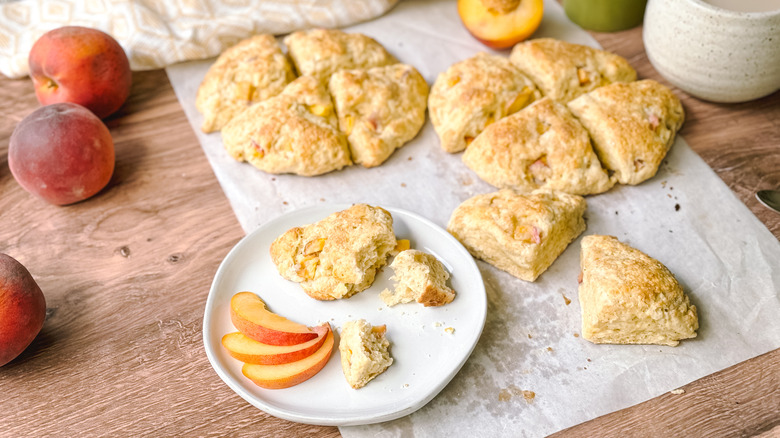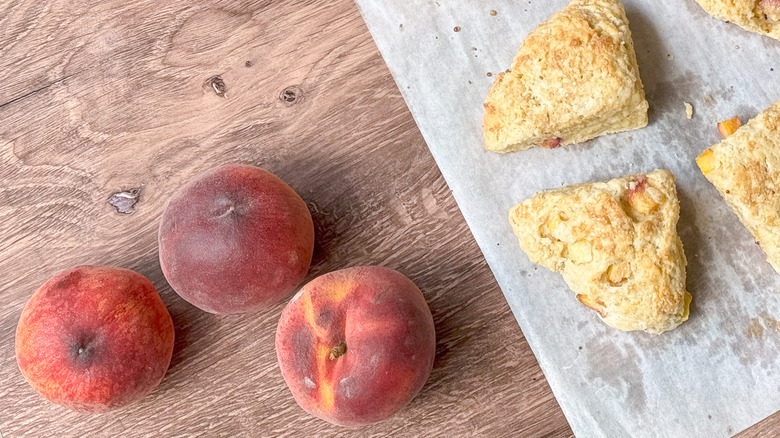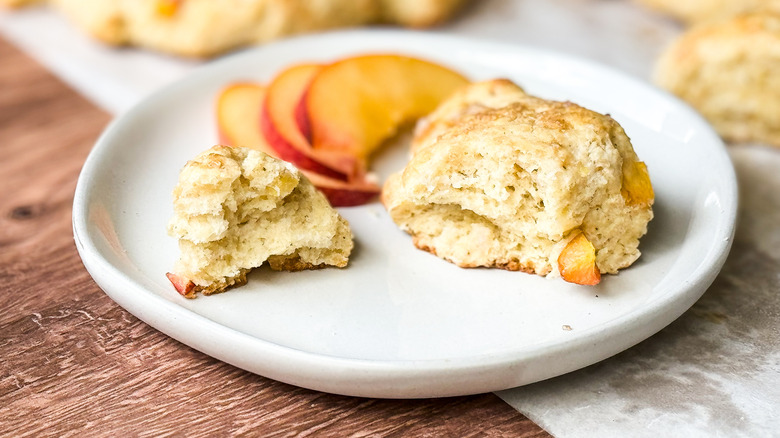Peaches And Cream Scones Recipe
A warm, fragrant scone fresh out of the oven is a pure delight whether served for breakfast or with afternoon tea. Although scones may seem fancy, they are wonderfully simple, easy to prepare in just a few steps, and can be made in sweet or savory form. Unlike biscuits with their flaky and buttery layers, scones have a more dense texture with a tender crumb. Scones lend themselves to holding a variety of flavorings, from dried fruits and nuts to chocolate, herbs, or cheese. This recipe for peaches and cream scones – courtesy of recipe developer Julie Kinnaird – will show you how to mix fresh fruit into your scone dough for a true cream scone experience. These tender scones are bursting with fresh peach flavor and a hint of cloves, and are topped with a bit of crunchy turbinado sugar.
Traditional scones are often labeled as butter scones or cream scones. Butter scones, as their name implies, contain a higher percentage of butterfat, while cream scones only contain the butterfat coming from the heavy cream. Kinnaird's recipe incorporates both the richness achieved by cutting butter into the flour, plus the softness that heavy cream adds. The result is a tender and fragrant scone that melts in your mouth.
Gather the peaches and cream scones ingredients
For this recipe you will use all-purpose flour as the base of the dough, sweetened with granulated sugar and leavened by baking powder. Fine sea salt and ground cloves season the dough and balance the sweetness. Freshly grated lemon zest adds brightness to complement the fresh peaches. Use unsalted butter to cut into the flour, and bring the dough together with a couple of large eggs and some heavy cream (a bit of cream will also be used to brush the tops of the scones).
Step 1: Preheat the oven
Preheat the oven to 400 F.
Step 2: Prepare a baking sheet
Line a baking sheet with parchment paper.
Step 3: Combine the dry ingredients
Combine the flour, granulated sugar, baking powder, salt, cloves, and lemon zest in a large bowl.
Step 4: Cut in the butter
Cut in the butter using a pastry cutter or two forks until the mixture looks like coarse crumbs.
Step 5: Stir in the peaches
Stir in the peaches just until coated with the dry mixture.
Step 6: Whisk together the eggs and cream
Whisk together the eggs and ½ cup of heavy cream until smooth.
Step 7: Mix the dough
Add the egg mixture to the dry ingredients and peaches and stir just until a dough starts to come together.
Step 8: Knead the dough
Turn the dough out onto a work surface and gently knead 6 times until smooth.
Step 9: Divide the dough
Divide the dough into 3 equal portions.
Step 10: Flatten the dough into disks
Pat each piece into a round disk and transfer to the baking sheet.
Step 11: Score the dough
Use a dough divider or knife to score each round into 4 wedges.
Step 12: Brush the dough with cream
Brush the tops of the scones with the remaining 1 tablespoon heavy cream with a pastry brush.
Step 13: Sprinkle the dough with turbinado sugar
Sprinkle the scones with the turbinado sugar.
Step 14: Bake the scones
Bake the scones for 15 minutes until golden brown and firm.
Step 15: Cool the scones
Remove from the oven and cool on a rack.
Step 16: Serve the scones
Serve the fresh scones with your favorite tea and toppings.
Peaches and Cream Scones Recipe
Tender scones bursting with fresh peaches and flavored with a touch of lemon and a pinch of cloves are perfect for breakfast or with clotted cream for high tea.
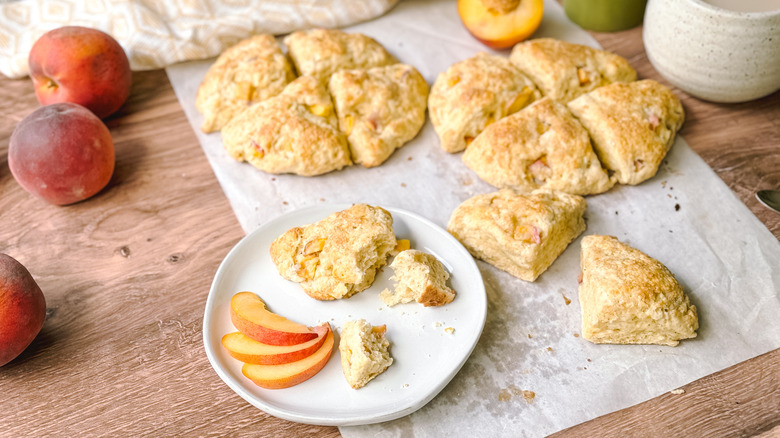
Ingredients
- 2 cups all-purpose flour
- 2 tablespoons granulated sugar
- 1 tablespoon baking powder
- ½ teaspoon sea salt
- ¼ teaspoon ground cloves
- Finely grated zest of 1 large lemon (about 1 tablespoon)
- 4 tablespoons cold butter, cut into small pieces
- 1 cup diced fresh peaches (2 medium peaches)
- 2 large eggs
- ½ cup heavy cream + 1 tablespoon, divided
- 1 tablespoon turbinado sugar
Directions
- Preheat the oven to 400 F.
- Line a baking sheet with parchment paper.
- Combine the flour, granulated sugar, baking powder, salt, cloves, and lemon zest in a large bowl.
- Cut in the butter using a pastry cutter or two forks until the mixture looks like coarse crumbs.
- Stir in the peaches just until coated with the dry mixture.
- Whisk together the eggs and ½ cup of heavy cream until smooth.
- Add the egg mixture to the dry ingredients and peaches and stir just until a dough starts to come together.
- Turn the dough out onto a work surface and gently knead 6 times until smooth.
- Divide the dough into 3 equal portions.
- Pat each piece into a round disk and transfer to the baking sheet.
- Use a dough divider or knife to score each round into 4 wedges.
- Brush the tops of the scones with the remaining 1 tablespoon heavy cream with a pastry brush.
- Sprinkle the scones with the turbinado sugar.
- Bake the scones for 15 minutes until golden brown and firm.
- Remove from the oven and cool on a rack.
- Serve the fresh scones with your favorite tea and toppings.
Nutrition
| Calories per Serving | 174 |
| Total Fat | 8.5 g |
| Saturated Fat | 5.0 g |
| Trans Fat | 0.1 g |
| Cholesterol | 52.4 mg |
| Total Carbohydrates | 21.0 g |
| Dietary Fiber | 0.8 g |
| Total Sugars | 4.6 g |
| Sodium | 145.0 mg |
| Protein | 3.6 g |
What are the best kinds of peaches to use for baking?
There are three main categories of peaches. These include the clingstone, the freestone, and the semi-freestone. These labels refer to how much the peach flesh clings or doesn't cling to the stone or pit. Although all three groups have delicious qualities, the freestone is considered the best for baking, with its firm flesh, subtle sweetness, and tendency to be less juicy than the clingstone variety. Clingstone peaches are known for being soft, juicy, and very sweet, and they make a delicious snack when fresh and ripe, but don't hold up as well when baked and can introduce too much moisture into baked goods. Semi-freestone peaches have the best qualities of both their cling and freestone cousins, so they are also a delicious baking option.
When choosing peaches for a recipe like the peaches and cream scones, select peaches that are firm but have a bit of give when pressed. This indicates that they have started to ripen. Kinnaird says that it is not necessary to peel the peaches for this recipe, as the peach skins soften while baking and add a nice burst of color to the scones.
How are scones typically served?
Scones are thought of as a quintessential British baked good. They are closely associated with the rituals of daily life in the U.K. as well as being a popular offering to anyone looking for a very English experience. They vary according to their region of origin and can take many forms, from dense triangles of dough prepared on a griddle to the lighter, baked round version that we're probably most familiar with today. They are considered an essential part of an afternoon tea service and are often served at a more elaborate high tea such as you might find at a tea shop or hotel.
At a high tea or cream tea, bowls of clotted cream, jam, fresh strawberries, and fruit curd are set out to slather on the scones and to enjoy with a freshly brewed pot of tea. If you don't have clotted cream, sweetened whipped cream or crème fraîche will do the trick. Savory scones can be served with slices of meat and cheese or a savory spread. Scones are also perfect to take on picnics.
Scones are best eaten on the day they are baked, but they hold up remarkably well if kept tightly wrapped in the refrigerator. Re-warm the scones wrapped in aluminum foil at a low temperature in the oven. The scones will still taste fresh and delicious when they are served. Leftover scones are wonderful for breakfast or as a mid-morning snack.
